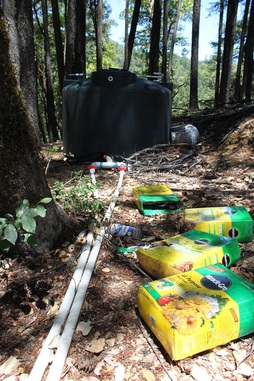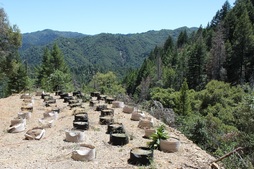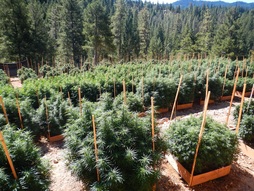Addressing the Environmental Impacts of Marijuana Cultivation



A Growing Problem
Over the past two decades California has watched marijuana cultivation boom without putting a plan in place to reduce the harmful effects on the environment. The drought has dramatically exposed marijuana production’s negative impacts on sensitive rivers and streams. As production expands and the possibility increases that recreational marijuana could be legalized, now is the time to develop solutions to address the environmental damage caused.
California produces a staggering 60 to 70% of all of the marijuana cultivated in the US. The cash value of the annual marijuana crop in California is estimated to be $16 billion, more than the top two agricultural crops combined, yet the industry remains largely unregulated. Experts also estimate that there are currently 50,000 growth sites in California and an additional 5,000 abandoned growth sites on public lands that are in need of restoration. Sites pop up frequently in hard to access, remote locations. However, the California Department of Fish and Wildlife has only enough resources currently to inspect less than one percent of those sites.
Harmful Side Effects
Marijuana cultivation has many harmful effects on streams and rivers. While farmers of more established crops sometimes collect and store water during the rainy season to use during the summer and fall, marijuana growers usually divert water straight from streams during the dry season, reducing already low water levels and threatening the survival of salmon, amphibians, and other animals. As the water levels drop, temperatures go up and stress fish. In some cases, sections of streams dry out completely.
Pollution is another big problem. Forest clearing, land terracing, and road construction often occur right next to streams and rivers and lead to erosion. Fine sediment runs directly into streams, damaging spawning and rearing habitat for imperiled coho salmon and steelhead trout. Pesticides and herbicides contaminate water and poison wildlife. Diesel often leaks from generators set up to pump water to plants, polluting streams and further stressing fish and amphibians.
Developing Solutions
In 2014, the State began to tackle the problem in earnest with the launch of The Water Boards and California Department of Fish and Wildlife cross-agency team to bring marijuana growers into environmental compliance. Under the Medical Marijuana Regulation and Safety Act of 2015, this taskforce was expanded and made permanent. The State Water Board cannabis cultivation regulatory program focus on water quality protection requirements. As of February 2016, cultivators must enroll in the Cannabis Cultivation Waste Discharge Regulatory Program.
In 2016, Proposition 64 passed, legalizing recreational use of marijuana in California. Twenty percent (20%)of the estimated $1 billion tax revenue would work to clean, restore, and remediate environmental damage caused by the cultivation of cannabis. Funds would also be used to discourage the illegal cultivation of cannabis which could harm the environment.
Learn more:
- State Water Board Cannabis Cultivation Regulatory Program
- State Water Board Cannabis Cultivation Regulatory and Enforcement Unit
- North Coast Regional Water Board Cannabis Cultivation Waste Discharge Regulatory Program
- Central Valley Regional Water Board Cannabis Cultivation Waste Discharge Regulatory Program
Partners In Action
The Nature Conservancy has been working with an array of partners to help ensure that California becomes the first state to build strong environmental protections and funding mechanisms into marijuana policies. We conducted research and analysis into the scope and scale of the problem collaboratively with academic partners at U.C. Berkeley, Boston University, Stanford University, and Integral Ecology Research Center — as well as with agency partners at the North Coast Regional Water Quality Control Board, California Department of Fish and Wildlife, and the State Water Resources Control Board. As part of the California Salmon and Steelhead Coalition, we have worked with Trout Unlimited and California Trout to influence legislation and the upcoming legalization ballot initiative to ensure both address the needs of the environment. Finally, we have built alliances with conservation groups on the front line of the issue such as Friends of the Eel River in order to make sure our policy recommendations make sense in the communities most impacted.